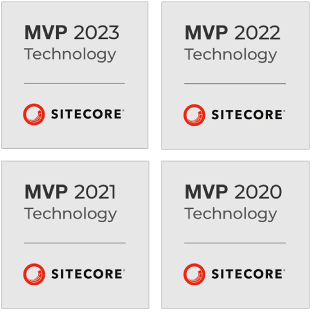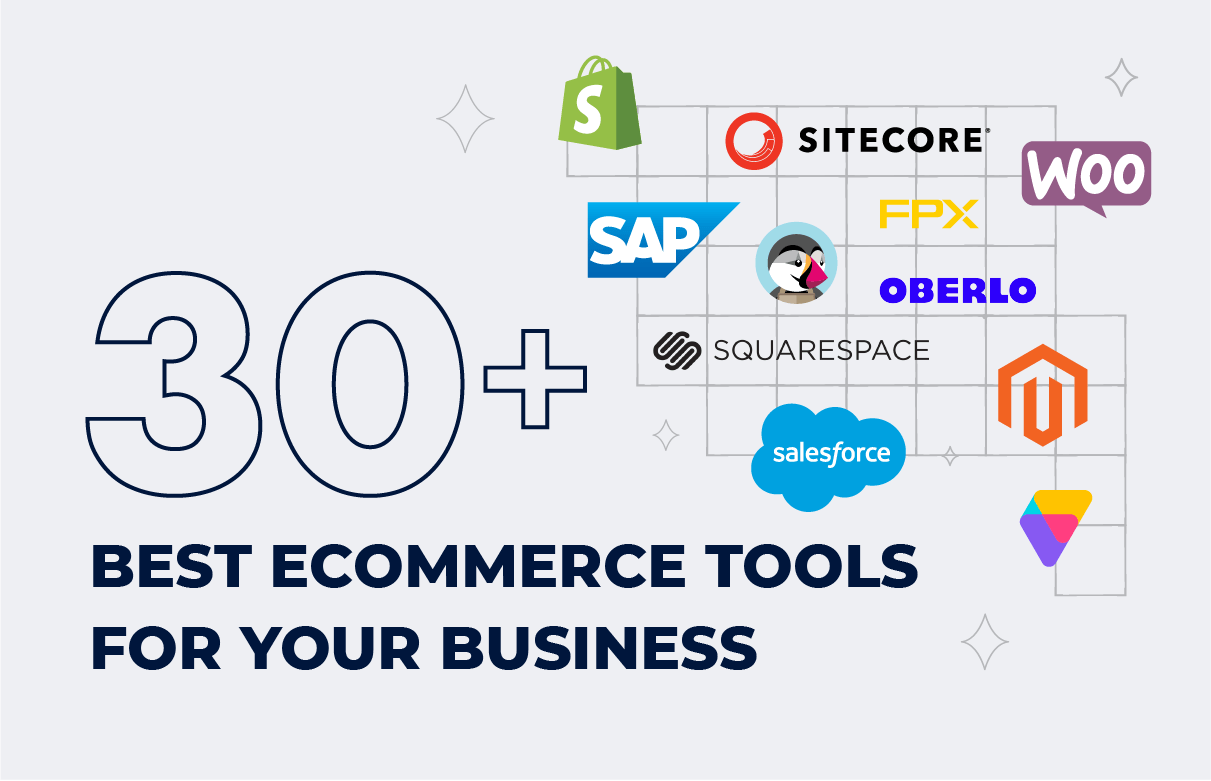In July 2022, Sitecore officially entered the cloud era by announcing the launch of the Sitecore Experience Manager Cloud (XM Cloud) . With this new product, the company moved its main CMS solution to a cloud architecture, promising its customers exceptional digital experiences.
Let’s take a detailed look at Sitecore XM Cloud and discover the advantages that Sitecore clients and users will gain from new features offered by the platform.
With a four-time Sitecore MVP on board, SaM Solutions guarantees high-quality results of Sitecore development or modernization.
Introduction
Sitecore is a leading global provider of solutions and tools for content creation and management, order and digital asset management, marketing campaigns, personalization etc. Sitecore Digital Experience Platform (DXP), powered by data science, analytics, digital marketing technologies, and AI/ML capabilities, allows eCommerce businesses to create advanced digital experiences across multiple channels and industries.
The important thing about Sitecore as a digital experience provider is that they never stop improving, and develop bleeding-edge solutions for their customers to make them succeed in their niche. Sitecore Experience Manager Cloud (XM Cloud) is among such game-changing products. Let’s answer some questions to understand the essence of this modern solution and compile its comprehensive definition.
Sitecore Experience Manager Cloud:
- What is it? — An advanced CMS.
- Where is it deployed? — In the cloud.
- Who can use it? — Developers and marketing specialists.
- What are the key characteristics? — SaaS, cloud nativeness, agility, the combination of traditional CMS and headless architecture.
- What can you do with it? — create and manage content, start websites, deliver digital experiences across all channels from a single cloud platform.
Definition: Sitecore Experience Manager (XM) Cloud is a next-generation cloud-native Software-as-a-Service CMS that enables double-quick software development and cloud content management across multiple channels and devices due to its headless architecture.
Note that Sitecore Experience Manager offers a composable approach, which means you can flexibly use its modules. For example, initially, you decide to use the platform only as a CMS, because your budget is limited. But later, you need to add personalization or eCommerce functions. With Sitecore XM Cloud, you can quickly connect these modules like building blocks.
Features of Sitecore Experience Manager Cloud
To get a better understanding of the platform’s capabilities, take a look at the main features it provides.
Cloud Portal. This is a single control center for Sitecore XM products and solutions. Team members with the appropriate access rights can control all the products, perform operations with them and create composable experiences all in one place. In the future, Sitecore is planning to provide access to all the DXP products via Cloud Portal, which will be highly convenient.
Sitecore Managed Cloud Deployment. Using the Experience Manager Cloud, you don’t need a DevOps engineer, because the deployment is configured automatically during the creation of a new instance in the Cloud Portal.
Headless Services. This is a module with software development kits and APIs for creating decoupled apps and delivering omnichannel experiences.
Headless SXA. Sitecore Experience Accelerator (SXA) is an add-on for Sitecore XM Cloud, allowing developers, designers, and content managers to work on your site simultaneously, thus speeding up development.
Sitecore Next.js SDK. This is a React-based framework with a set of sample applications enabling headless development.
GraphQL. An alternative to REST, GraphQL is the query language for APIs that ensures communication between the server and the client. With GraphQL, you can transfer the necessary data to the application in one request, even if they are located in several sources. This makes GraphQL data extraction technology more convenient and practical.
GitOps support. GitOps is a modern convenient approach in software engineering for cloud-native applications based on DevOps best practices. Sitecore Experience Manager supports GitOps, ensuring automation, transparency and improved team collaboration.
JAMstack support. This frontend architectural approach is based on JavaScript, APIs, and Markup and includes the static site generator (SSG) concept. JAMstack makes it possible to work with a variety of modern frameworks and offers exceptional flexibility due to the support of all deployment scenarios. When deploying a new environment, you can choose Vercel as a host provider that partners with Sitecore and provides SSG.
JSS. Sitecore XM supports the JSS framework, which provides JavaScript packages and allows for developing based on Sitecore data.
Multi-site management. With the new Sitecore product, marketers can translate and localize content easily, deploy Sitecore pages for multiple global regions much quicker, and manage them from a single place.
Pages. A product for visual content editing, which replaces Experience Editor. With Pages, you can manage all your media assets from a single place and distribute various types of content across different channels.
Content Explorer. A tool for editing content fields in the editor view. It allows you to work with content items of all websites within your instance, create new items, and even access content that is not available in Pages.
Components. It is also known as Frontend as a Service (FaaS), a reusable component editor, which allows you to select and manage data sources for components.
Benefits of Sitecore Experience Manager Cloud
Content management with Sitecore XM Cloud has a range of essential benefits for your business.
Fast website performance. The modern cloud architecture combined with the capabilities of headless CMS improve the loading speed of your website pages and the overall site performance calculated by search engines.>
Scalability. The SaaS and composable nature of Sitecore Experience Manager Cloud allows you to easily scale up and down your project depending on business requirements and other factors. You can add modules if your business is growing, or remove some unnecessary tools if you currently don’t use them.
Increased speed to market. Sitecore Experience Manager Cloud streamlines the development process due to flexible deployment scenarios, headless services, component reusability, GitOps support, and other modern tools and approaches. As a result, business owners can bring their products to market much faster.
Automatic updates. Since Experience Manager Cloud is a SaaS platform, all the updates are performed automatically, so you don’t need to constantly plan the updates and spend extra money on it.
Flexible pricing. Sitecore Experience Manager offers flexible payment options, since it uses a composable approach to digital experiences. You don’t pay for the entire system, only for modules you actually use for your business needs.
What Is the Key Difference between Managed Cloud and Experience Manager Cloud?
The main difference between Sitecore Managed Cloud and Sitecore Experience Manager lies in their cloud infrastructure delivery models. Managed Cloud is a PaaS (platform as a service) offering, while XM Cloud is a complete SaaS solution. There are also some other distinctive features:
- Sitecore XM is all about composability, which means it offers cloud headless and API-based solutions.
- Sitecore XM does not have CD environments, so the MVC renderings are no longer supported.
- Sitecore XM provides SPE and SXA modules out of the box.
What Can You Get Through Using Sitecore Experience Manager Cloud?
Experience Manager Cloud gives advantages to all groups of people who are in touch with it:
- Developers gain exceptional freedom in terms of software development. They can choose from a range of frameworks, DevOps tools, APIs, deployment options and third-party integrations.
- Marketers and content editors enjoy intuitive visual tools, the headless architecture and the WYSIWYG authoring experience. They can build amazing web pages and deliver content across multiple channels with no effort. Creating a digital content strategy has become easier than ever before.
- Customers get even more relevant content and personalized experiences.
- Business owners benefit from all the above-mentioned points: a streamlined development process brings the product quicker to the market; well-prepared marketing strategies achieve their goals; the number of loyal customers grows. It all results in additional revenues and profits for the business.
Conclusion
The Sitecore Experience Manager Cloud is a true next-generation CMS, offering you a wide range of capabilities for creating powerful SaaS products. With this agile, no compromise platform, you can easily improve your content experience and commerce management, rising it to the next level.




















 The Latest 15 Information Technology Trends in 2024
The Latest 15 Information Technology Trends in 2024 Top 10 Embedded Software Development Tools
Top 10 Embedded Software Development Tools IaaS vs. PaaS vs. SaaS: What’s the Difference?
IaaS vs. PaaS vs. SaaS: What’s the Difference? 10 Examples of Predictive Analytics
10 Examples of Predictive Analytics



![Why You Should Upgrade to Sitecore 10 [including the Sitecore 9 vs. 10 comparison]](https://www.sam-solutions.com/blog/wp-content/uploads/2022/09/Why-upgrade-to-sitecore-10.png)



![[TechSpeak] Migrating a Legacy Solution to Helix Architecture: a Step-by-Step Guide](https://www.sam-solutions.com/blog/wp-content/uploads/2021/02/Migrating-to-Sitecore-Helix-Architecture-image-1-1024x660-min.png)



